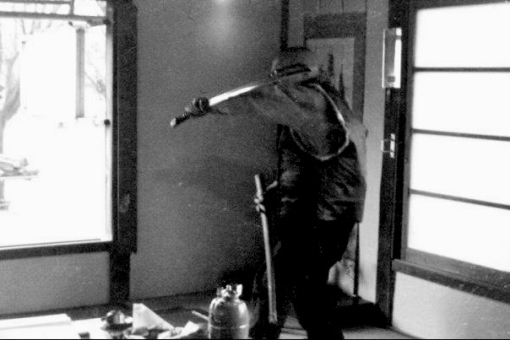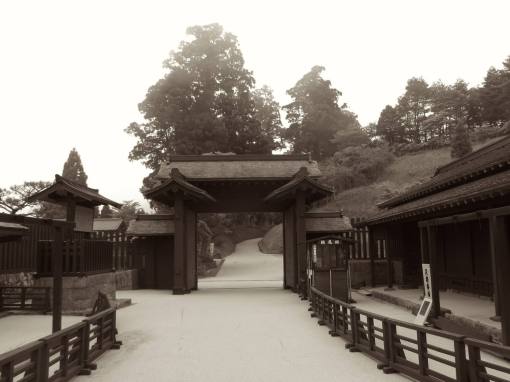
Yasuji Kuroda, (1897 – 1976), was the 13th Sōke of Shishin Takuma-ryū jujutsu, Komagawa Kaishin-ryū kenjutsu, Tamiya-ryū, Tsubaki Kotengu-ryū bōjutsu, Seigyoku Oguri-ryū, and Otengu (Daitengu)-ryū. Renowned and respected greatly for his rare skill by his peers and other swordsmen of the day, a number of anecdotes about the man have survived that paint a unique portrait of a rare warrior and master, the type that only seemed to exist in the civil war annals of Old Japan.
* As a child, Yasuji often went to a liquor store to buy alcohol. There was a large dog that would always bark fiercely at him and would give chase when he passed. One day, he opened the wooden door of the shop to hail the owner, the dog suddenly rushed upon him. He leapt face first into the danger, drawing his sword, and decapitated the animal.
* Once, he was attacked at gunpoint by a couple of violent thieves, as he made his way along a quiet road in town. With almost imperceptible speed, he drew his sword and cut the gun wielding attacker’s revolver in half.
* On one occasion, he cut two thick ‘makiwara’ cleanly in
half with one stroke of a blunt saber.
* Yasuji was also said to be capable of drawing and cutting
a ‘shinai’ (bamboo practice sword) that was sent into the
air.
* Once, a sword-weilding ronin attacked he and his friend in the country. When the ronin swung his sword, the blade broke away from the ‘tsuka’ (handle) and was sailing towards the head of Yasuji’s friend. Yasuji instantly, and with seemingly impossible speed, stepped in front of his friend and let the blade pierce his own shoulder to save his life. The entire incident took place in a tenth of a second.
#YasujiKuroda #martialarts #katana #budo #swordsman #Japan #ryu #Japanesehistory









